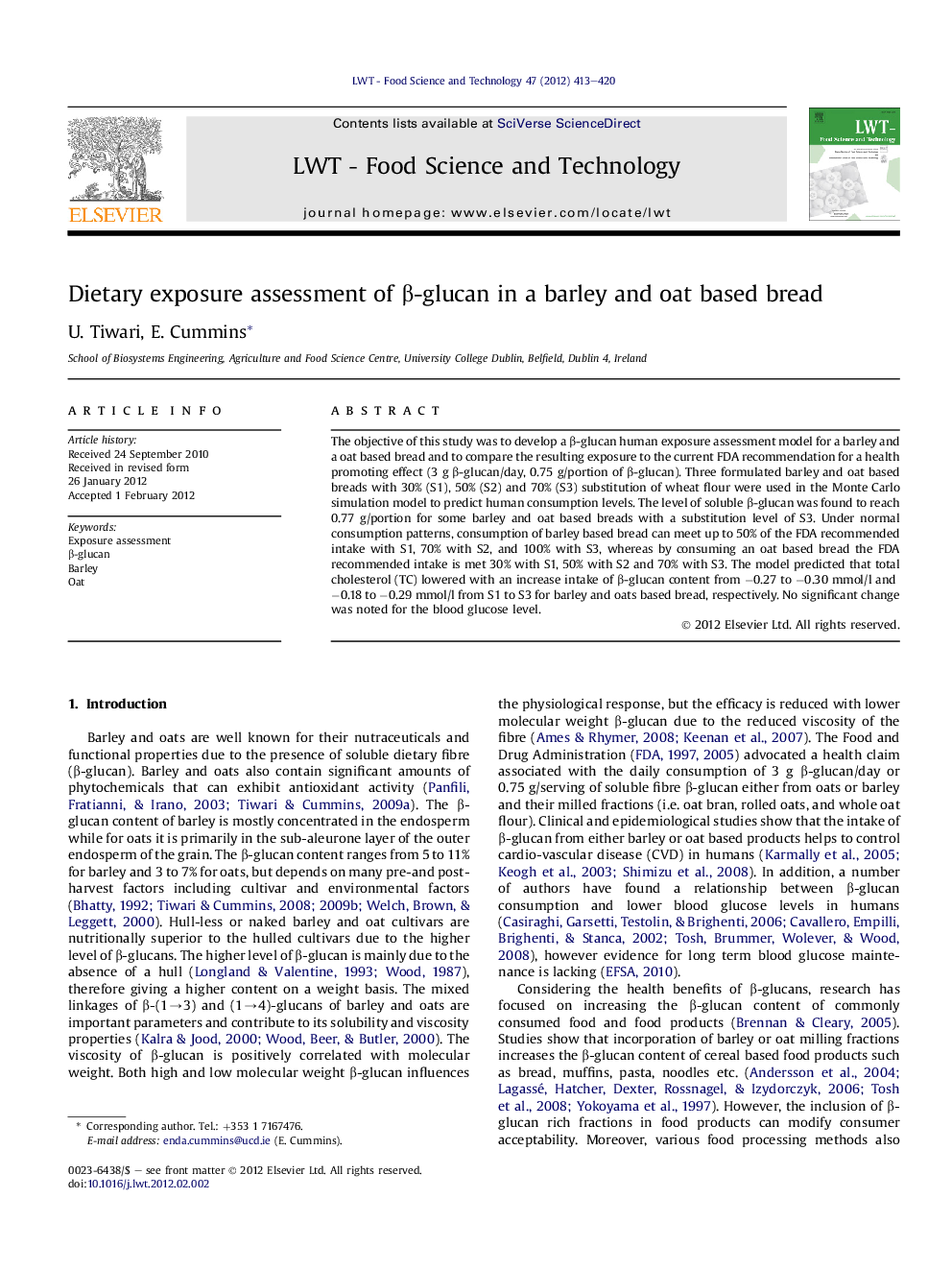| Article ID | Journal | Published Year | Pages | File Type |
|---|---|---|---|---|
| 6405571 | LWT - Food Science and Technology | 2012 | 8 Pages |
The objective of this study was to develop a β-glucan human exposure assessment model for a barley and a oat based bread and to compare the resulting exposure to the current FDA recommendation for a health promoting effect (3 g β-glucan/day, 0.75 g/portion of β-glucan). Three formulated barley and oat based breads with 30% (S1), 50% (S2) and 70% (S3) substitution of wheat flour were used in the Monte Carlo simulation model to predict human consumption levels. The level of soluble β-glucan was found to reach 0.77 g/portion for some barley and oat based breads with a substitution level of S3. Under normal consumption patterns, consumption of barley based bread can meet up to 50% of the FDA recommended intake with S1, 70% with S2, and 100% with S3, whereas by consuming an oat based bread the FDA recommended intake is met 30% with S1, 50% with S2 and 70% with S3. The model predicted that total cholesterol (TC) lowered with an increase intake of β-glucan content from â0.27 to â0.30 mmol/l and â0.18 to â0.29 mmol/l from S1 to S3 for barley and oats based bread, respectively. No significant change was noted for the blood glucose level.
⺠Inclusion of barley or oat flour increases the soluble β-glucan content of bread. ⺠β-Glucan intake lowers cholesterol level and alters the blood glucose level. ⺠Appropriate storage and process conditions enhance the β-glucan content of bread.
